 |
Satish Lele lelepiping@gmail.com |
View this page as YouTube Video Presentation
Pipe work flexibility: The pipe work system must be sufficiently flexible to accommodate the movements of the components as they expand. In many cases the flexibility of the pipe work system, due to the length of the pipe and number of bends and supports, means that no undue stresses are imposed. In other installations, however, it will be necessary to incorporate some means of achieving this required flexibility.
An example on a typical steam system is the discharge of condensate from a steam mains drain trap into the condensate return line that runs along the steam line. Here, the difference between the expansions of the two pipe work systems must be taken into account. The steam main will be operating at a higher temperature than that of the condensate main, and the two connection points will move relative to each other during system warm-up.
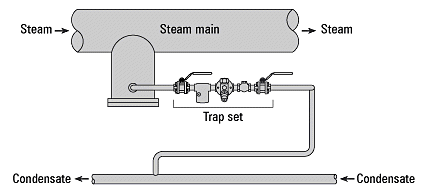
In practice, pipe work expansion and support can be classified into three areas as shown in Figure below.

The fixed or 'anchor' points 'A' provide a datum position from which expansion takes place. The sliding support points 'B' allow free movement for expansion of the pipe work, while keeping the pipeline in alignment. The expansion device at point 'C' is to accommodate the expansion and contraction of the pipe.
Expansion fittings: The expansion fitting 'C' in Figure is one method of accommodating expansion. These fittings are placed within a line, and are designed to accommodate the expansion, without the total length of the line changing. They are commonly called expansion bellows, due to the bellows construction of the expansion sleeve.
Other expansion fittings can be made from the pipe work itself. This can be a cheaper way to solve the problem, but more space is needed to accommodate the pipe.
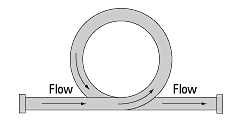
The downstream side passes below the upstream side and great care must be taken that it is not fitted the wrong way round, as condensate can accumulate in the bottom. When full loops are to be fitted in a confined space, care must be taken to specify that wrong-handed loops are not supplied.
The full loop does not produce a force in opposition to the expanding pipe work as in some other types, but with steam pressure inside the loop, there is a slight tendency to unwind, which puts an additional stress on the flanges.
This design is used rarely today due to the space taken up by the pipe work, and proprietary expansion bellows are now more readily available. However large steam users such as power stations or establishments with large outside distribution systems still tend to use full loop type expansion devices, as space is usually available and the cost is relatively low.
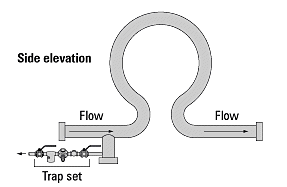
If any of these arrangements are fitted with the loop vertically above the pipe then a drain point must be provided on the upstream side as in Figure.
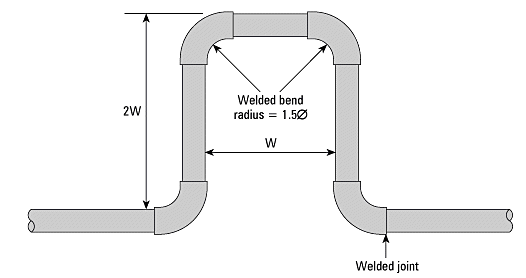
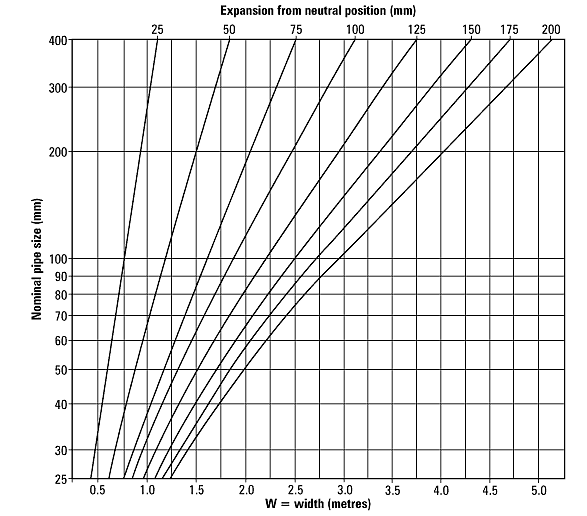
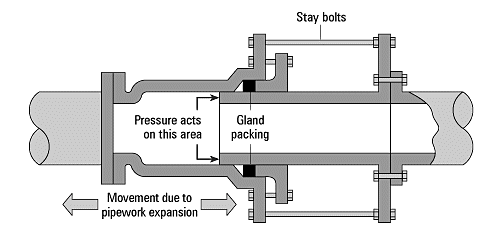
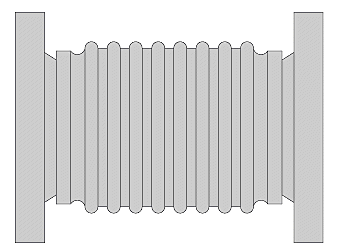
Bellows may incorporate limit rods, which limit over-compression and over-extension of the element. These may have little function under normal operating conditions, as most simple bellows assemblies are able to withstand small lateral and angular movement. However, in the event of anchor failure, they behave as tie rods and contain the pressure thrust forces, preventing damage to the unit whilst reducing the possibility of further damage to piping, equipment and personnel.
Where larger forces are expected, some form of additional mechanical reinforcement should be built into the device, such as hinged stay bars.
There is invariably more than one way to accommodate the relative movement between two laterally displaced pipes depending upon the relative positions of bellows anchors and guides. In terms of preference, axial displacement is better than angular, which in turn, is better than lateral. Angular and lateral movement should be avoided wherever possible.
Figure (a), (b), and (c) below give a rough indication of the effects of these movements, but, under all circumstances, it is highly recommended that expert advice is sought from the bellows' manufacturer regarding any installation of expansion bellows.
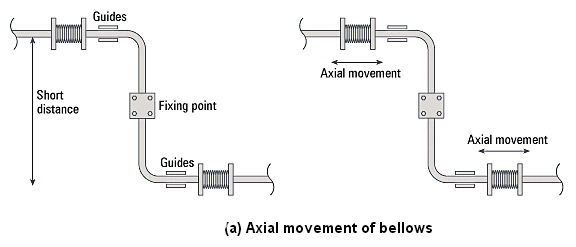
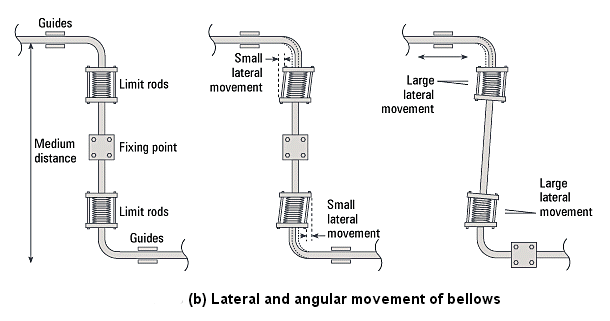
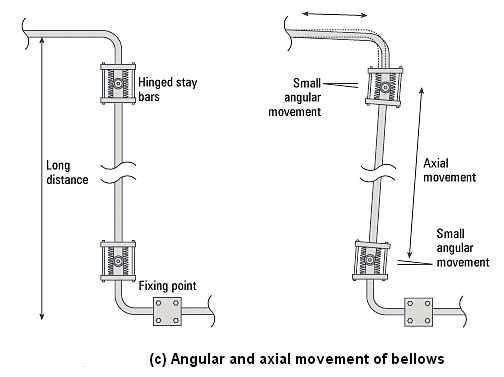
Pipe support spacing: The frequency of pipe supports will vary according to the bore of the pipe; the actual pipe material (i.e. steel or copper); and whether the pipe is horizontal or vertical.
Some practical points worthy of consideration are as follows:
Pipe supports should be provided at intervals not greater than shown in Table below, and run along those parts of buildings and structures where appropriate supports may be mounted. Where two or more pipes are supported on a common bracket, the spacing between the supports should be that for the smallest pipe.
When an appreciable movement will occur, i.e. where straight pipes are greater than 15 meters in length, the supports should be of the roller type. Vertical pipes should be adequately supported at the base, to withstand the total weight of the vertical pipe and the fluid within it. Branches from vertical pipes must not be used as a means of support for the pipe, because this will place undue strain upon the tee joint. All pipe supports should be specifically designed to suit the outside diameter of the pipe concerned. The use of oversized pipe brackets is not good practice. Table can be used as a guide when calculating the distance between pipe supports for steel and copper pipe work.
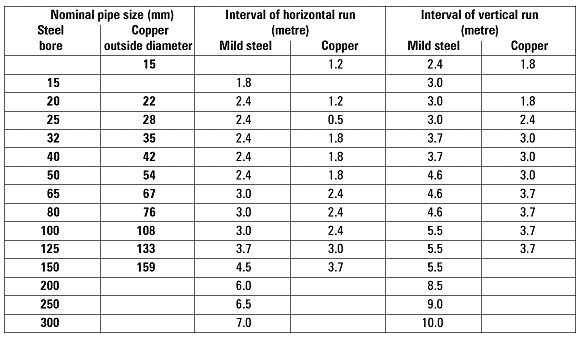
 to get all the information as a eBook
to get all the information as a eBook
